It’s taken Scott a while to get around to this whole 29er thing, but while they were redesigning their Scale hardtail to become even lighter (now down to 899g) it made sense to develop a 29er too. And what a frame! We got to ride it in some of the high-altitude, tree and sage-lined trails of Sun Valley, Idaho and came back raving about their new big wheeler.
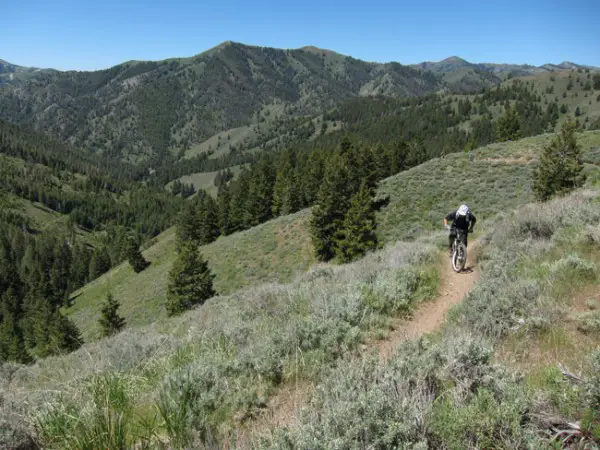
Before we get all the 29ers frothed up about the Scale 949, here’s the 50g lighter 26in Scale 899. (Scott reckons its 50g lighter than the Cannondale Flash and 200g lighter than Trek and Specialized’s lighest hardtails too. The 26in is different to the 29er in a few ways and there are some weight saving bits on it that aren’t on the 29er, like the tiny, tiny 5g seat binder. Compared to last years 26in Scale, it has a 10mm lower BB, a 5mm higher headtube (to save on ‘heavy’ steerer and spacers) and is 10mm longer in the top tube. Both frames, however, have the same 12.2in BB height and the Scott IMP (Integrated Moulding Process) which allows it to mould frames in fewer, lighter parts. The 899 has a Press Fit BB30, which saves 30g, the seat binder saves 11g too… It all adds up.
Let’s look at the 949 and go through some of the neat things that both frames share.
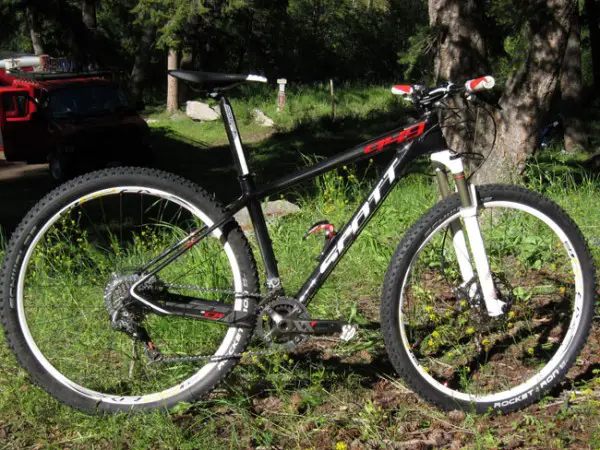

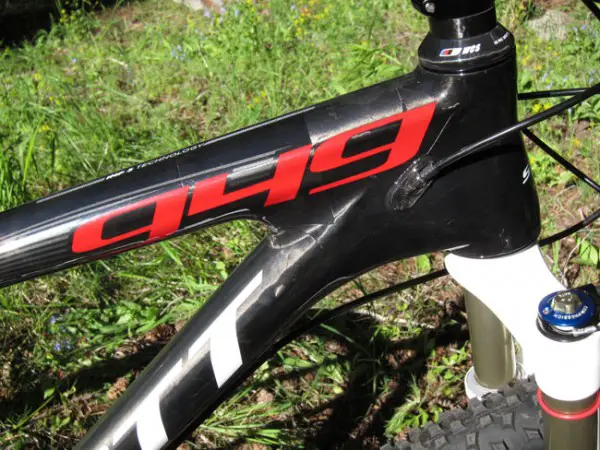
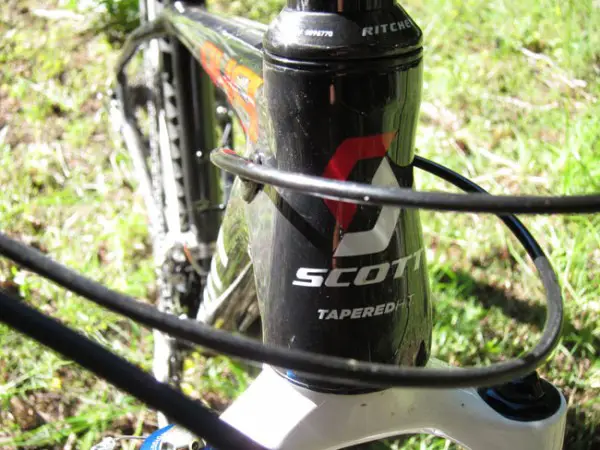
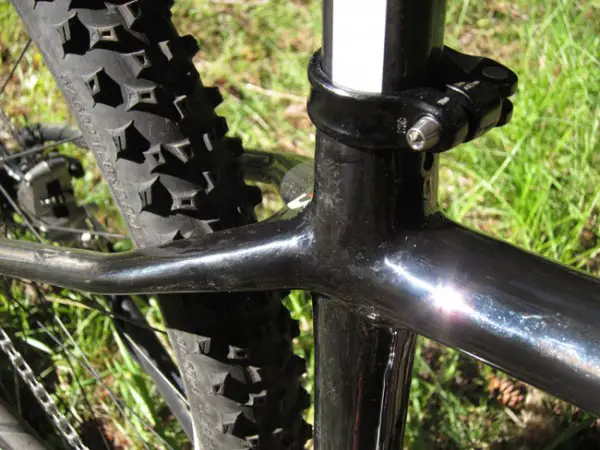
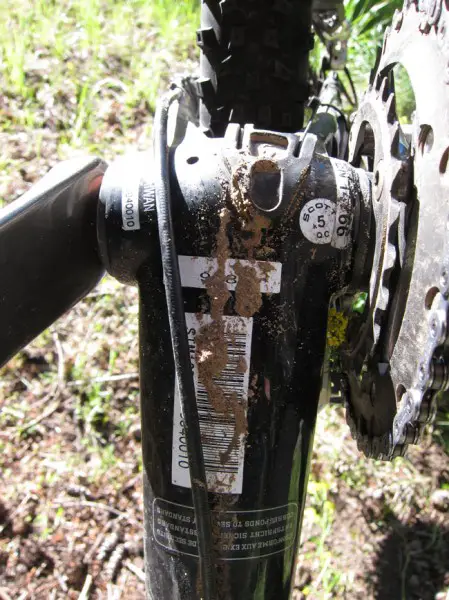

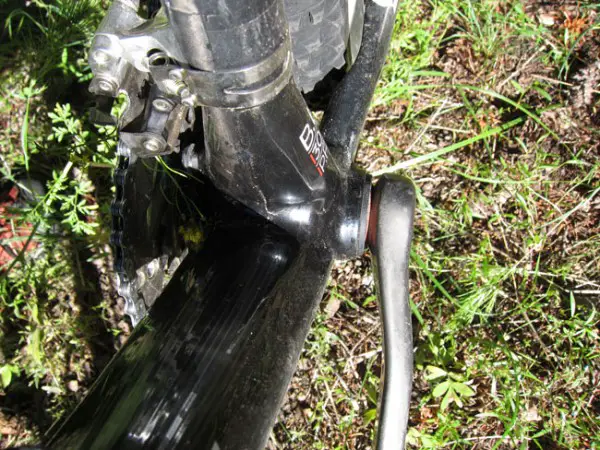
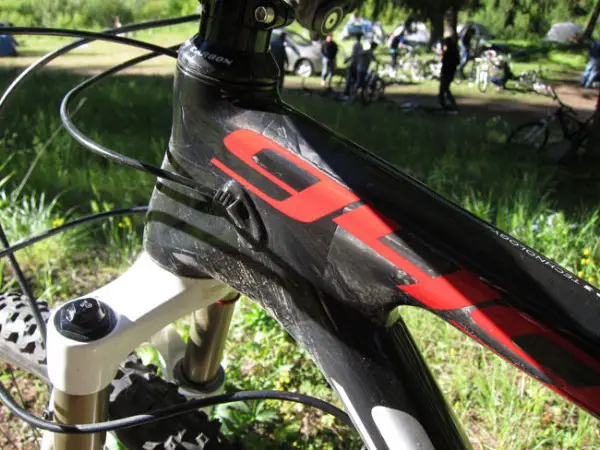
The Scale 949 will come in Medium, Large and XL sizes. No small size is offered. I (that’s me, Chipps, at 5ft 9in) rode a Medium and found it fine. I could have gone up to a large at a push, so the Medium will probably work down to 5ft 6in riders without looking stupid.
But how does it ride? As you might imagine, riding a 20-odd pound hardtail race weapon, it was great. There’s still no getting over the extra time it takes to spin up the bigger wheels, but the overall weight of the bike makes it a pretty easy task. There wasn’t a hint of side-to-side flex, but the vertical aspect of the ride was very comfy – and I’m tempted to suggest that I could feel that near-5mm of ‘give’ in the rear stays. Climbing, both in and out of the saddle was consistent and flattered the rider into feeling like a climbing god, even in the thin air of the Idaho mountains. On descents, I was still smoked by the full suspension folks, but the bike was very steady steeering on the descents and not what I’d expect from a race-ready bike. No twitchiness to be felt and the bike really held a line. The inclusion of the Reba 20mm fork made a lot of sense (well, until we start seeing 29er SID forks, eh?) as it beefed up the steering feel to match the girth of the head tube assembly (which you’ll see above is HUGE).
All in all, I came away very impressed. It shows that not all Scales need be confined to race courses and ridden by experts, nor that 29ers be slaves to groomed trails.
I’m now very keen to ride the 26in Scale – after all, just the frame is 500g lighter, just think how light a whole bike’ll be!
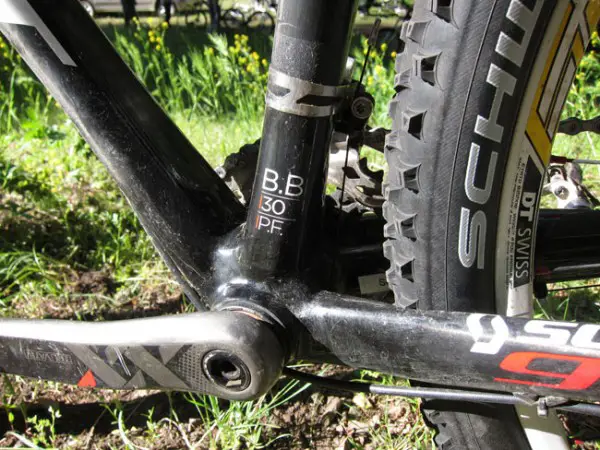
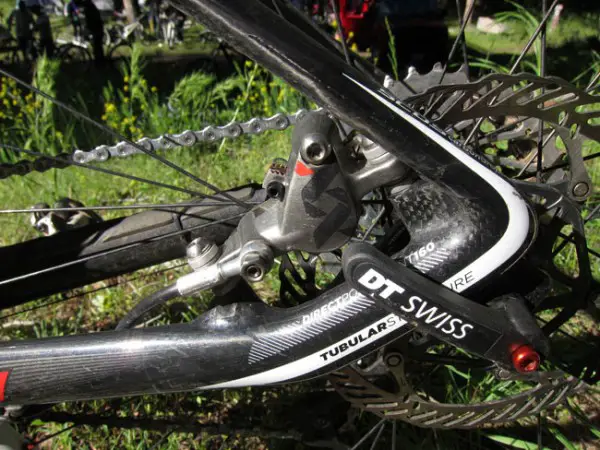
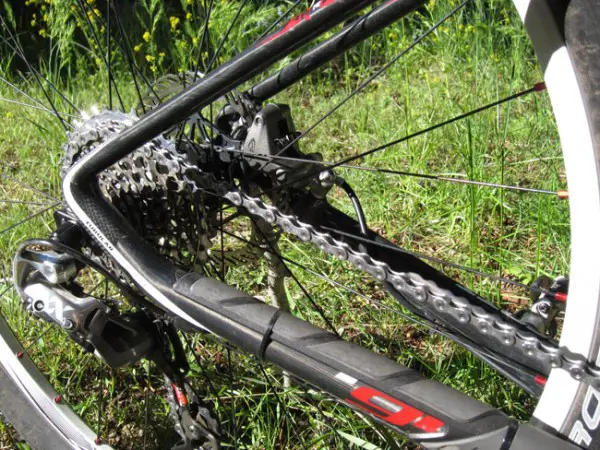
Thanks to Scott and Adrian and crew at Scott USA for the bikes and to Simon, Sue and Sevvy from Western Spirit for the campfire experience…
For details of Scott’s new sub-30lb, 185mm new Genius LT bike, see our story here.
Comments (15)
Leave Reply
Post Comment

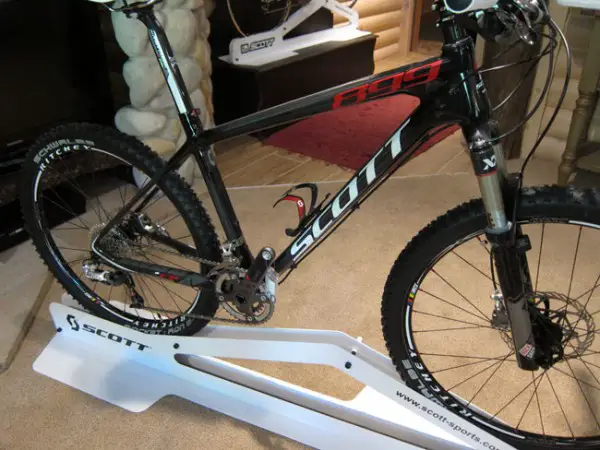
I read elsewhere that it’s the Shimano press fit set-up, rather than a wide spaced BB30.
Aye/No?
The Genius LT definitely uses the BB92 ‘standard’. I’m tempted to say that the Scale has the BB30PF, but I’ll check for you.
The picture of the chainstays up there has BB30 PF printed quite large on the bottom of the seat tube…
They look good. I was wondering if Scott were going to do anything with the Spark, as it’s getting quite long in the tooth, but I imagine all the R&D has been going into these hardtails…any word, Chipps?
I’m pretty sure they are BB92 on the 29er (just wrong graphic on test bikes) and PF30 on the 26″ model.
‘Fork height is optimised for 506mm forks’
Nice…..i expect that may be a typo 😀
there’s some Americanisms in this piece. “Neat”, “smoked”. Are you sure this wasn’t stolen from someone else? 🙂
“I’m now very keen to ride the 26in Scale – after all, just the frame is 500g lighter, just think how light a whole bike’ll be!”
Suggest there’s another typo there 🙂
The post mount rear saves more weight than using a 140mm rotor, so PM+160 < IS+140, makes sense!
Some more answers for y’all.
There was no mention of a new Spark, but who knows what they have in the works.
gregmay: 506mm is the axle to crown length that Scott have set the 29er up for. The 26in will run 473mm crown to axle forks.
Neat and smoked were appropriate words. Neat as in tidy. As for smoked, I could have written ‘roosted’ 🙂
The BB30 sticker on the 29er is incorrect, so it too will run a BB92.
The rear postmount does save more weight than a 140 vs 160mm rotor, though there will be some racers who want both. The one downside to it is that it’s near impossible to get to the rearmost caliper mounting bolt with a multitool – you need a ball-ended T-bar. Saying that, though, it’s not in a place where the caliper is going to get knocked out of place much.
and you replace the gear cable how……….internal infernal.
Here you can just see the kink in the seat tube that keeps the back end tight-in on the 29er, plus the ‘dent’ for tyre clearance
i think you meant
Here you can just see the kink in the seat tube that keeps the back end tight-in on the 29er, plus the dent for tyre ‘clearance’
I was assured that the internal routing has an internal guide (so no coat-hangers) – however, I’ve not sawn one in half to check – yet 🙂
“Let’s look at the 949 and go through some of the neat things that both frames share”
It still sounds like Britney to me, even if you did mean it in the “tidy” sense of the word 🙂
I still don’t get the ‘time to spin up a big wheeler’ This is all about gear ratio’s. If I am in a lower gear relative to the 26er and apply the same power we will accelerate at the same rate will we not? And why doesn’t anyone talk about the bigger contact patch and hence greater cornering grip offered….
It’s not all about gear ratios. It’s about wheel diameters and weight. Tie a weight to a 29in piece of string and start spinning it. Now make that piece of string shorter by 3in and try again. The shorter string is quicker to get spinning. Add this to the fact that 29er wheels are heavier too and there’s more weight to get turning (and to slow down again)
29ers do have a greater contact patch and the climbing and cornering grip is excellent. They can be harder to change direction at speed though.